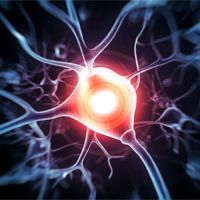Article
Stem Cell Treatment Shows Promise in Animal Model of Diabetic Neuropathy
Author(s):
Study shows intramuscular injected bone marrow-derived mesenchymal stem cells may be able to restore the myelin sheath and nerve cells in diabetic sciatic nerves.

Diabetic neuropathy was improved in animal models after stem cell injections, according to research published in Cell Transplantation.
Researchers from the Cell Transplantation Center of Excellence for Aging and Brain Repair in Putnam Valley, New York used mesenchymal stem cell injections in animal models of diabetic neuropathy in order to test the efficacy of this treatment method. The mesenchymal stem cells were chosen because of their easy isolation from a variety of sources such as adipose tissues, tendons, peripheral blood, umbilical cord blood, and bone marrow. The most successfully transplanted cells, a press release about the study said, are the ones that come from bone marrow. Those cells can offer the best chances for treatment for conditions like burns and cardiovascular diseases.
The animal models were rats with diabetes which were randomly assigned to receive a bone marrow derived mesenchymal stem cell injection for 12 weeks after the induction of diabetes, or a placebo saline injection. The non-diabetic control group was matched to the diabetic group based on age and sex. Additionally, the researchers confirmed the presence of diabetic neuropathic pain using nerve conduction velocity tests.
The researchers found that the animal models of diabetic neuropathy experienced blood vessel growth (angiogenesis) as well as nerve re-myelination after the mesenchymal stem cell injections, specifically from the bone marrow-derived cells. They believe the findings suggest that this specific injection can restore the myelin sheath and nerve cells in diabetic sciatic nerves.
“We investigated whether local transplantation of bone marrow derived mesenchymal stem cells could attenuate or reverse experimental diabetic neuropathy by modulating angiogenesis and restoring myelin, the electrically insulating substance surrounding nerves that is reduced by diabetic neuropathy,” study co author Young-sup Yoon explained in the statement. “In this study we have provided the first evidence that intramuscular injected bone marrow-derived mesenchymal stem cells migrate to nerves and can play a therapeutic role.”
The press release additionally noted that diabetic neuropathy causes many other conditions stemming from nerve damage, like numbness, reduced ability to detect painful stimuli, muscle weakness, pain, and muscle spasms. However, this treatment may be able to lead the researchers to developing new therapies for diabetic neuropathic pain patients. Before these developments can happen though, the researchers commented, the technology has to be tested for human application.




